“I have no greater joy than to hear that my children walk in truth.”
(3 John 1:4)
Chapter 8
Six biblical conundrums
of the gap theory
SYNOPSIS: The matter of hayah, tohuw, bohuw, bara and asah – The gap theory is less than 200 years old – World renowned Hebraists agree, Genesis describes a single creation 6000 years ago – The gap theory’s invented words and terms – A doctrine that elevates the devil – The sobering origin of the gap theory, a surprising 3000-year back story.
Note: Any reader not familiar with these gap theory arguments may struggle with this chapter. If this is the case for you personally, rather than become bogged down in detail and lost in the confusion, just read it to get a general overview (or skip to Chapter 9). This is because navigating the gap theory is like trying to paddle in mud, on account of the fact that it takes God’s plain account of creation and twists the words to formulate a bewildering narrative full of double meanings. Gap theorists like to confound people with their “original Hebrew” esoteric constructs – here I work to untangle them.
According to the gap theory, Gen 1:1 describes the creation of the heavens and the earth, and Gen 1:2 describes the condition of the earth after it had been turned into a state of chaos and confusion and a total wasteland and God began to restore it. The only reason to interpret Genesis this way is so an indeterminate time period can be inserted into the creation narrative, because a) it brings the Bible into line with old age scientific theory, and/or b) some people believe this is necessary in order to accommodate the rebellion and fall of angels. This special (unbiblical) reading of Genesis 1 presents us with two creations – the “initial creation” and the “re-creation”.
And so, according to gap creation, the word “was” in Gen 1:1-2 should be read as “became“:
“In the beginning God created the heavens and the earth. The earth became (hayah) without form (tohuw) and void (bohuw); and darkness was on the face of the deep. And the Spirit of God was hovering over the face of the waters.”
Consequently, from Gen 1:7 to Gen 2: 4 the word for “made” (asah) should be read “re-made“:
“And God re-made (asah) the firmament, and divided the waters which were under the firmament from the waters which were above the firmament: and it was so.” (Gen 1:7)
Also, from Gen 1:21 to Gen 2:4 the word “created” (bara) should now read “re-created“:
“And God re-created (bara) great whales, and every living creature that moves, which the waters brought forth abundantly, after their kind, and every winged fowl after his kind: and God saw that it was good” (Gen 1:21).

This really is the heart and core of gap creation reasoning, because without these controversial interpretations of Scripture there is NO gap theory.
There are, however, a number of problems with these arguments. The obvious being that the re-interpretation of these Hebrew words is arbitrary and inconsistent. This is because gap creationism applies these new meanings to some verses in Genesis 1 but not others. For example: Gen 1:1 – “In the beginning God created (bara) the heaven and the earth”. Here, gap creationists are quite happy to accept the reading of bara as “created”. After all, generally speaking, gap creationism does not claim that Genesis 1:1 is also referring to a “re-creation”. And in Gen 1:27: – “So God created (bara) man… male and female he created (bara) them…”. Gap creationism does not believe that God “re-created” man and woman.
Furthermore, in gap creation, the words asah and bara, after Genesis 2:4, return to their original meanings of made and create for the remainder of the Old Testament, showing that they are NOT interchangeable.
Below I have highlighted six other major problems with gap creation.
1: The matter of hayah, tohuw, bohuw, bara and asah
The gap theory relies on the controversial translation of five Hebrew words: hayah, tohuw, bohuw, bara and asah (and it is controversial). What’s more, only a very small number of people in the history of Christianity have insisted on using these new words: “became” for “was” (hayah); “re-created” for “created” (bara); and “re-made” for “made” (asah) when referring to the creation account.
The gap theory also claims that Gen 1:2 “without form” (tohuw) should be interpreted as “chaos and confusion”, which I comment on further down; and that “void” (bohuw) should be replaced with “laid waste”. This particular point I will explore in Chapter 9 (‘History of the Gap Theory’).
Gap creationists admit that Gen 1:2 tells us nothing about a “previous creation”. And so we are usually directed to four other verses said to support this doctrine – Is 45:18; Is 34:11; Jer 4:23; Ps 104:30. (I have left out the Scriptures that refer to Lucifer’s rebellion, as there is no question that Satan DID rebel, but rather when it occurred. Furthermore, this event fits more naturally with a 6000-year-old creation, as I document in Chapter 12; ‘In the Beginning – a Young Earth Creation Narrative’.)

However, when we examine the four verses stated above, they don’t confirm an ancient earth that was decimated after billions of years, at all.
Now, let us first examine the gap creationist’s adopted position on the word hayah.
Hayah
When we hear arguments that support a doctrine, it is our responsibility to check out the facts for ourselves and not just trust what others tell us to believe (Acts 17:11). And one of the fundamental arguments used by gap creationists is that the Hebrew word for “was” (hayah) in Gen 1:2 (Strong’s H1961) can be translated both as “was” and also “became”. Thus, according to this reasoning, “the earth was formless, and void” can be changed to “the earth became formless, and void”. In which case, something must have happened to make the earth that way, and so a gap of an indeterminate time period can be inserted between Gen 1:1 and Gen 1:2 – on the reasoning that “was” can legitimately be changed to “became”.
Below is the verse in question, Genesis 1:2, as shown in the Masoretic Text (refer Blue Letter Bible – BLB – online). Here, the English word “was” is shown as the translation for the Hebrew root word hayah.
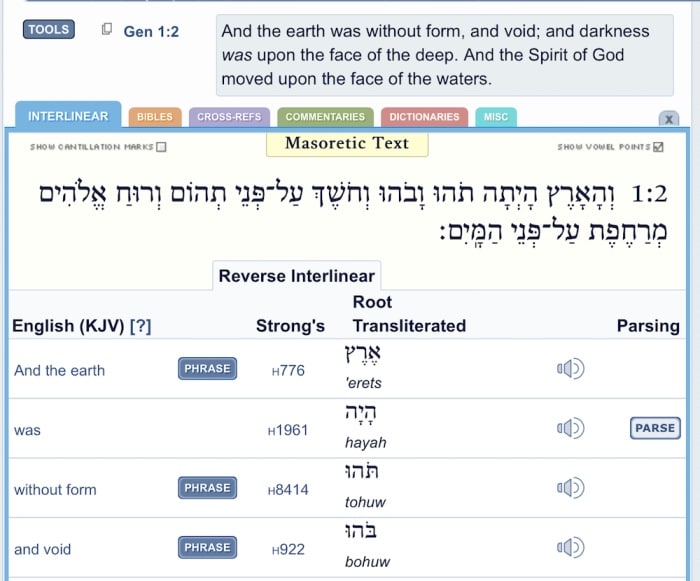
Now, in order to support the view that hayah can be translated “became”, gap creationists refer to various other Bible verses where the word “became” is used. Their argument: “If hayah has been translated as ‘became‘ in Gen 3:20, because ‘Eve became the mother of all living’, and also in Gen 4:20 ‘Jabal became the father of tent dwellers’ then hayah in Gen 1:2 can also be translated as ‘became‘.”
But if we take a closer look at this claim, we find it is false.
Below is another screengrab from the BLB, and here we can see that the word hayah (Strong’s H1961) does not actually exist in Gen 3:20. Rather the word “was” is connected to the Hebrew word ’em (Strong’s H517).
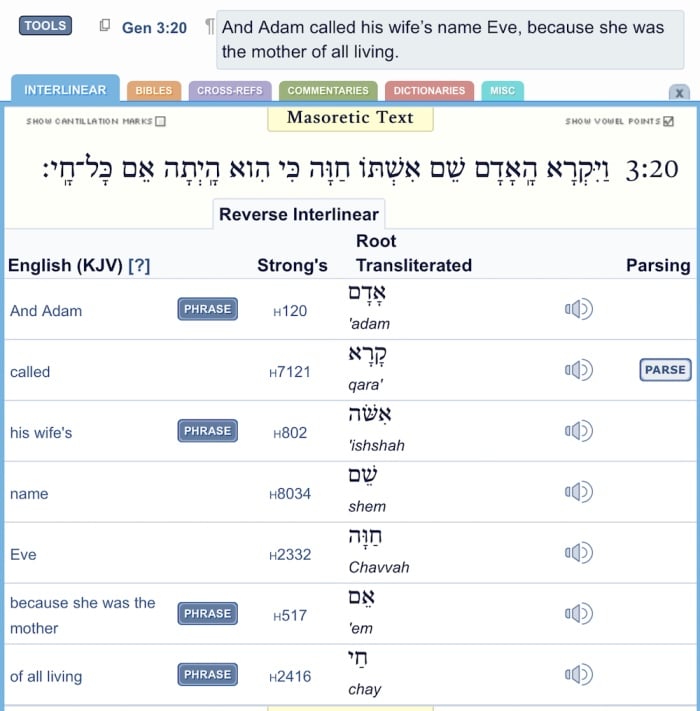
As for Gen 4:20 (seen below), the word “was” used in this verse has also not been translated from the Hebrew word hayah. Rather it is connected to the Hebrew word ‘ab (Strong’s H1).
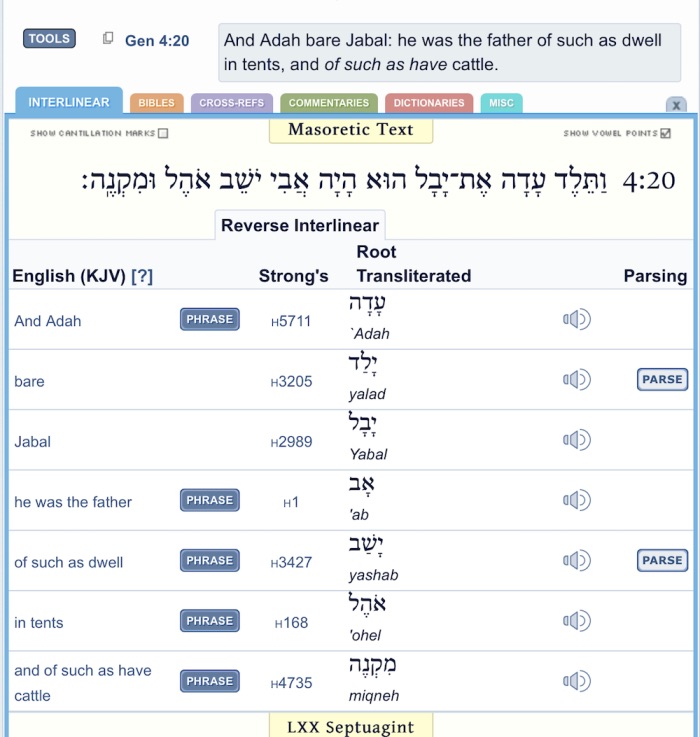
In other words, it is not valid to compare Gen 3:20 and Gen 4:20 to Gen 1:2, in an argument to defend the gap theory: i.e. that the word “became” in these two verses (’em and ‘ab) can be applied to the word hayah in Genesis 1:2.
(Note: there are two instances in the KJV where hayah has been interpreted as the English word “become”. However, neither of these verses communicates an ancient development in the context of creation, which is why it is not used in Gen 1;2. Rather, they each describe a very recent event – having just occurred that day; ie. “have become”. “O Israel; this day thou art become the people of the Lord thy God” – Deut 27:9; and “For thou hast confirmed to thyself thy people Israel to be a people unto thee for ever: and thou, LORD, art become their God” – 2 Sam 7:24.)
The case of Hayah and strong’s concordance
According to some gap creationists, the Hebrew root word hayah (Strong’s H1961) occurs more than 600 times in the KJV of the Bible and it has often been translated as “became”. But if we look at the Masoretic Text, hayah only appears 75 times. (Refer to the BLB; see screengrab below.)
Furthermore, not once is the word “became” derived from the Hebrew root word hayah. Rather, “became” is represented by words such as chay, na’er, ‘echad and, bayith, etc…
So what is going on?
These gap theory arguments appear to rely on the use of Strong’s Concordance and Dictionaries. But James Strong (pictured below) was not a Hebraist or a Greek scholar. He was an engineer who was granted a Doctor of Divinity and later became a professor of exegetical theology.
His Concordance was written to provide an alphabetical listing of all the words in the KJV Bible along with a numbering system connecting these English words to their Hebrew or Greek root dictionary meanings. As such it is a very useful Bible study tool, as a concordance, but the result is not God’s inspired text and it has its limitations.
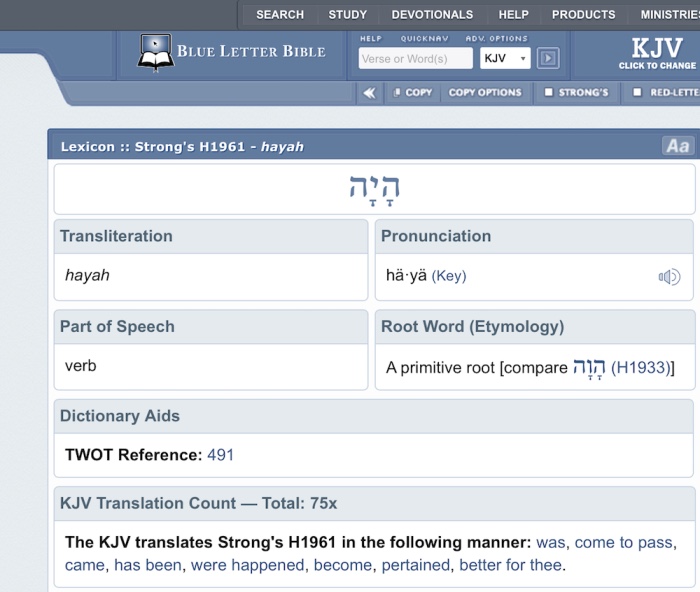
This is because the dictionary definitions provided in Strong’s Concordance are not always literal renderings but rely, to some degree, on the subjective reasoning of the compiler. To compound this problem, many gap creationists look to various Bible software programs, such as e-Sword, as their authority.
I don’t intend to go deeply into the unreliability of secondary sources here – i.e. Bible study aids such as dictionaries, commentaries and software programs – but I will say one thing. The Bible study software e-Sword, for example, is a product of its developer Rick Meyers. And it needs to be remembered that Meyers is not a Hebrew scholar, he is a software programmer. So it is important to know which resources he has utilised, how these databases have been compiled and in what manner they interact with a person’s search terms. In other words, the users of e-Sword are relying, probably unaware, on a Bible study aid that operates with multiple vectors, and thus an unknown error content. I am not saying all the compilers of these Bible tools are being deceitful, but their tools are not accurate.
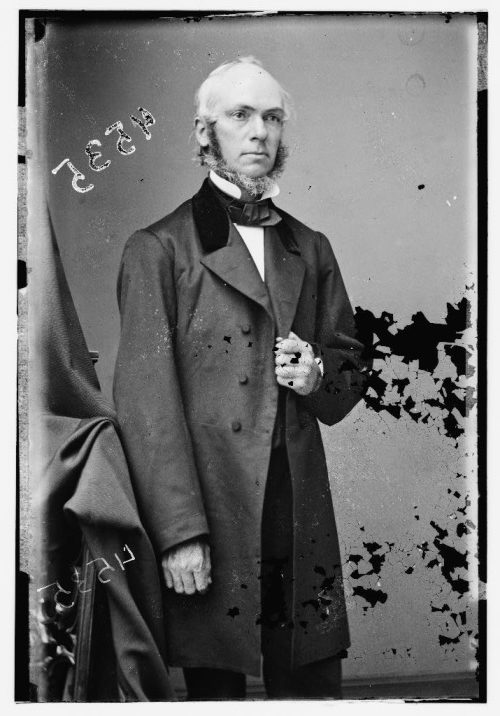
The fact is, the full power of Strong’s Dictionaries ONLY comes to bear in conjunction with Strong’s Concordance of the KJV.
Just applying a link between “Strong’s Numbers” (which only provide a truncated dictionary meaning) and any other Bible version (which may use different words), via an unreliable/unknowable third-party software program is a seriously flawed study system for Bible students.
Without knowing this, a person using e-Sword presumes that a superscripted English word automatically identifies this word with the Masoretic text, when in reality it does not such thing!
Nevertheless, many people do not realise this and they place too much faith in Bible study tools and Strong’s Concordance as unchallenged authorities, effectively using them to “correct God’s word”, as it were.
The truth of the matter is that “became” in Strong’s Concordance is most often not a direct translation from the Hebrew text but has been added to the KJV text for clarity in the English language. Also, the English word “became” is not connected to the Hebrew word hayah in any way, as evidenced in above examples in Strong’s Concordance. And, as stated previously, the Hebrew word hayah does not occur over 600 times in the original text as indicated in e-Sword.
All of which illustrates that the argument claiming hayah can be translated as became in Gen 1:2 is not based on the Hebrew manuscripts but has been made with the help of various unreliable secondary sources. So where does that leave the serious Bible student?
The great miracle is that God has not left us without direction and without a dictionary – because the Bible itself presents a self-contained dictionary. After all, throughout the history of humankind, the overwhelming majority have not had access to Bible software programs and so much Bible reference material as we do today. Thus it is clear that God has put everything we need within one book – His Book.

This might sound simplistic, but all a person needs is a concordance and a good version of the Bible (as opposed to the New Age/occult inspired versions – such as The Message and The Voice – being published today). And so, if we are testing a doctrine, or trying to understand difficult Scriptures, we must take the entire Bible into account and not the subjective, personal interpretation or claimed revelation of an individual or a group of people on a handful of words and Scriptures taken out of context (2 Pet 1:20). There is a word for this – proof texting:
“Proof texting is the method by which a person appeals to a biblical text to prove or justify a theological position without regard for the context of the passage they are citing” (www.theopedia.com/proof-texting).
This is because an investigation at the “word” level into Scripture will not lead a person to discover the truth of a matter.
Rather, we need to take the big-picture holistic approach by looking up the word in question and checking it against all the other verses where it is used. Furthermore, all words in Scripture must be defined by context and their use must be consistent with the rest of the Scriptures. Within the context of one of the verses listed, God will define the word for us (e.g. the meaning of “merchandise” in Eze 28:16 is explained in 2 Pet 2:3). Thus the safest and wisest position is to let the Bible interpret itself– i.e. the whole Bible has to have the last word– and in context.
Tohuw
According to gap creationists, there are four Scriptures that confirm the creation fell into a state of confusion in Gen 1:2. These are Is 45:18; Jer 4:23; Is 34:11; Ps 104:30. All of these relate to the word tohuw. In Hebrew, tohuw can mean “place of chaos” and “wasteland”, but it also has other meanings: “formlessness (of primeval earth), emptiness, nothingness, empty space, wilderness, of solitary places, vanity – of no value, for nought (futility)”. But there is no support here for the gap creation argument that the earth became a place of “chaos” sometime between Genesis 1:1 and Genesis 1:2.
Let us look at the first example cited above Is 45:18, where the Bible translation of tohuw is “in vain” (futility).
“He created the earth not in vain (tohuw), he formed it to be inhabited”. In other words, God created the earth to be filled with life. And if we look at the very next verse Is 45:19, God says, “I have not spoken in secret, In a dark place of the earth; I did not say to the seed of Jacob, ‘Seek Me in vain’” (tohuw).
Gap creationists never mention this verse, and it is easy to see why. It make no sense if we replaced “in vain” (futility) with “confusion” here. (“I did not say… ‘Seek me in confusion’”).

The same for Jer 4:23: “I beheld the earth and lo it was without form (tohuw)” – it has not yet been formed! These are not difficult Scriptures to understand, as God clarified (above) “I have not spoken in secret in a dark place on the earth”.
Now let us move on to the next Scripture that is used to support the gap theory, Is 34:11: “But the pelican and the porcupine shall possess it, Also the owl and the raven shall dwell in it. And He shall stretch out over it, The line of confusion (tohuw) and the stones of emptiness”. When this verse is read in context, God is addressing “you nations” and “you people” and he tells them of the slaughter that is coming “on the people of my curse, for judgment”. It has nothing to do with the creation process, which is why the English word “confusion” was not the translation used in Gen 1:2, rather the English words “formless, and void” were.
In short, just because words can be used in a variety of ways does not allow their meanings to be automatically interchangeable, because meanings depend on context. And no more so than in God’s holy Scriptures. As such we can’t swap them in and out of sentences at will, because such a practice will often result in an entirely different meaning (which is the whole point of gap creationism). And ignoring the contextual meaning by exercising one’s personal judgment on one word, while dismissing Scriptures that don’t fit, seems to be a very dangerous practice!
We have warnings in Scripture that we must not add or take away from God’s Word (Deut 4:2; Pro 30:6; Rev 22:19). This would include changing the intended meaning of the original writers.
Regarding Ps 104:30, gap creationists always refer to this Scripture as evidence that the earth had been destroyed and re-created. “You send forth Your Spirit, they are created (bara); And You renew (chadash) the face of the earth”.

But firstly, there is no mention of a re-creation here.
Secondly, a look at this verse in its context describes how the psalmist meditated on the visible creation all around him – the sea, the sky and the creatures therein – and how the Lord continually administers and sustains and renews it. He even talks about “man” and “the ships”, which would make no sense whatsoever in the context of an “initial creation” ruled by Satan.
“This great and wide sea, In which are innumerable teeming things, Living things both small and great. There the ships sail about; There is that Leviathan Which You have made to play there.” (Ps 104:25-26)
In other words, the psalmist is reflecting on the continual renewal process taking place in THIS creation now not reflecting on a “previous creation” or a “re-created” earth.
Bara and asah
Moving on to bara and asah, these words have been completely mistranslated in gap theory reasoning. This is evident when a search for synonyms for each word is conducted. It proves that “created” (bara) is not a synonym for “‘re-created”; and “made” (asah) is not a synonym for “re-made”, as they have very different meanings. This is exactly why gap creationists use them, because they know they have radically changed their definitions. These changes are mandatory, however, if a person wants these verses to “fit” with a gap creation timeline.
But God is not ignorant of the Hebrew word for re-made, renovate, renew or re-create, nor is he careless with the words he has chosen.
In Hebrew, to remake something is “`asah shuwb” (literally “made again”).
“And the vessel that he made (`asah) of clay was marred in the hand of the potter: so he made it again (`asah shuwb) another vessel, as seemed good to the potter to make it.” (Jer 18:4)

God could also have used the word chadash in Genesis 1, which can mean “make anew; repair; renew”, but he didn’t. As we see from the Bible verses below, there is no reference in the creation account to `asah shuwb – made again; or chadash – repair.
Note how God rested from “all His work which he had done” on the seventh day. If gap creationism were true that would mean the Lord would have been working for billions of years before the “re-creation” and before he got an opportunity to finally rest from creating. Also, God confirms in the verses below that the creation of the heavens and the earth was completed in six days. And that in its history, no plants or herbs had ever existed before!
“Thus the heavens and the earth, and all the host of them, were finished. And on the seventh day God ended His work which He had done, and He rested on the seventh day from all His work which He had done. Then God blessed the seventh day and sanctified it, because in it He rested from all His work which God had created (bara) and made (asah). This is the history of the heavens and the earth when they were created (bara), in the day that the Lord God made (asah) the earth and the heavens, before any plant of the field was in the earth and before any herb of the field had grown” (Gen 2:1-5).

2) The gap theory is less than 200 years old
Historically, there is no evidence that the gap theory was taught in churches for 1900 years, until it was popularised by a number of Protestant theologians (including C. I. Scofield and A. C. Custance). These men, and many others before them, were trying to reconcile the Bible with the newly proclaimed (early 19th century) old-age history of the world being promoted, first by deists and then by evolutionists. (emphases added)
“A Scottish theologian named Thomas Chalmers (1780-1847) was the first on record to propose the theory of a gap of time in one of his lectures at Edinburgh University in 1814.
“Until 1814, no theologian or recording in any literature of any culture’s history put forth this idea of a gap between Genesis 1:1 and 2.
“Chalmers gave little detail about the gap; it was only an idea …” (Robert E. Franzen, Creation Under Fire From Within The Church, 2009, p42)
“The single most effective teacher of this view [the gap theory] was C. I. Scofield, who included it in his notes on Genesis in the astonishingly popular Scofield Reference Bible. From there it became the almost unquestioned view of [Protestant] Fundamentalism…” (James Montgomery Boice, Genesis, Vol. 1, p50-51).
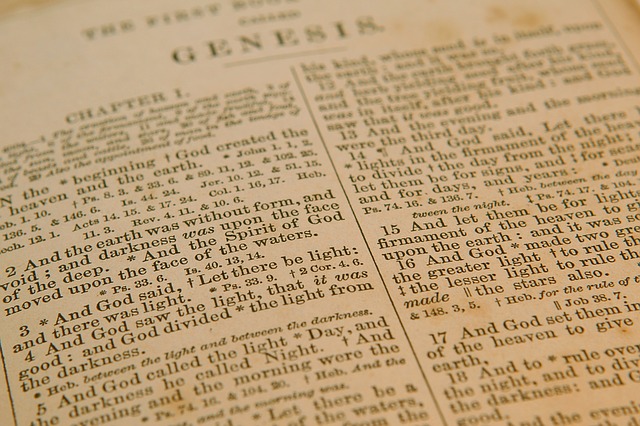
Bible commentator C. I. Scofield openly admitted his Reference Bible was trying to fit the Genesis creation account into the modern (evolutionary) science account.
“Relegate [consign] fossils to the primitive creation, and no conflict of science with the Genesis cosmogony remains.”
(C. I. Scofield, Scofield Reference Bible, 1945, p4)
3) World renowned Hebraists do not support the gap theory
World-renowned Hebraists today do not support the claim for an “initial creation” and a “re-creation”. For example, James Barr (d. 2006), who was Oriel Professor of the Interpretation of the Holy Scriptures, in Oxford, England (1976-1978), wrote in a letter to David Watson, Senior Fellow of Trinity College, Cambridge. He stated that as far as he knew.
“… there is no professor of Hebrew or the Old Testament at any world-class university who does not believe that the writer(s) of Genesis 1-11 intend to convey to their readers the idea that creation took place in a series of six days, which were the same as the days of 24 hours we now experience.” (Gorden Kainer, God’s Solution to the Doubting Dilemma, p177)
Decades later and other world-class Hebraists today still agree with James Barr – that the author’s intent in Genesis was to clearly communicate a single creation (6000 years ago), which was completed in the literal first-ever six days. Three of these Hebraists are: Hugh Williamson, the Regius Professor of Hebrew at Oxford University (perhaps the most prestigious university in the world, and Williamson is one of the best Hebraists anywhere).
Emanuel Tov of Hebrew University Jerusalem and FBA Editor-in-Chief of the Dead Sea Scrolls Publication Project (he would be one of the most qualified Hebraists in the world today); and Peter Williams, who is the warden of the theological research library at Tyndale House, Cambridge, England (which is the most prestigious of such facilities in the world), and there are others. (Dead Sea scrolls pictured.)
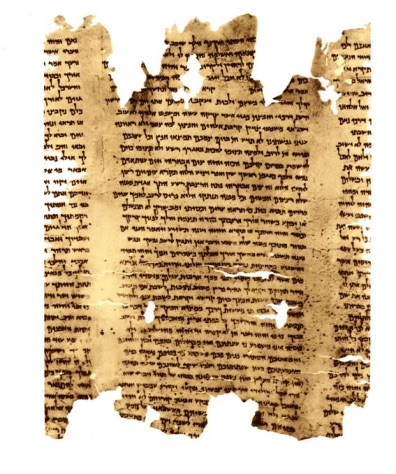
And the interesting thing is that although these men themselves have fallen in with the evolutionary paradigm, they have not tried to twist the Scriptures to fit their personal beliefs but admit, against their own worldview, that this is what the Hebrews wrote, believed and taught. (Refer article by Jud Davis, Associate Professor of Greek, ‘24 Hours – Plain As Day’, answersingenesis.org/articles/am/v7/n2/24-hours).
4) The gap theory’s new words and terms
The gap theory requires us to introduce new terms into the Masoretic text – e.g. “previous age”, “initial creation”, “the original creation”, “the Genesis prologue”, “the days of renewal”, “the renovation”, “the re-creation” and “a full restoration during six 24-hour days” (as used by the church I have referred to previously) – even though these words are found nowhere in Scripture.
5) A distubing doctrine that elevates the devil

But what is most disturbing is that this attempt to insert a gap-creation backstory into God’s Word introduces a new and lengthy chapter all about Satan in between the lines of Scripture, right at the beginning of the Bible, and then fills it with all manner of speculation that is confirmed nowhere in God’s Word.
Thus, in gap creationism, the devil is given the greatest possible prominence in the whole creation process. This fact alone should trigger our hearts to want to know the truth.
He is said to have ruled from his throne on the earth for billions of years throughout the “initial creation”. During this time, he has had dominion over all the works of God’s hands as well as over one third of the angels. He was given the creative ability to tend and finish the earth, as well as the power to potentially complete the universe and expand his lordship over the entire cosmos – as king of the universe. And when he took to the heavens to attack God and His angels, he caused such colossal damage that the inhabitants of the whole earth (some gap theorists believe this included soulless men) were all killed and the once awe-inspiring beautiful planet was reduced to rubble – finishing in chaos and confusion and a barren wasteland.
If this reading of Genesis were true, it would mean that the whole creation would have been so totally devastated that by Gen 1:2 it had been reduced to a formless body of water and God even had to “re-create” the firmament. That is, the expanse of the heavens where the celestial bodies are meant to reside! In which case we would read: “And God RE-made the firmament, and divided the waters which were under the firmament from the waters which were above the firmament: and it was so” (Gen 1:7).
The above scenario (taught in some churches) would mean that the devil managed to practically obliterate the entire universe, which is considered by some gap creationists to still be in a state of corruption and decay today. (Refer ‘Creation or Evolution: Does It Really Matter What You Believe?’, United Church of God, download available online. ) This, however, is in direct contrast to what King David said – that the heavens declare God’s righteousness and His glory and the firmament declares His handiwork, not the destruction by Satan (Ps 97:6; Ps 19:1; Ps 96:11-12).
Alternatively, according to another gap theory viewpoint, God inexplicably sat back and allowed Satan a free hand to do as he pleased, until eventually He intervened – not to destroy Satan, but to destroy His own beautiful creation and allow the devil to continue his rule over the earth – from the “initial creation” into the next creation (i.e. “the renovation”).
Either way, gap creationism portrays Satan as a formidable warrior capable of frustrating God’s plans on every level.

God’s Plan A – in which He gave Lucifer the earth and hoped he would eventually rule the universe – failed, now He had to resort to Plan B, creating man (which is what I had been taught in one church). All of God’s work had been destroyed and he had to start all over again, by conducting a total re-make of the earth’s surface and atmosphere (firmament), reappointing the heavenly bodies back into their correct place, and remaking all the beautiful creatures he had initially made (some of which, apparently, had originally been “designed” as predators and carnivores). After which, God introduced a new creature, man (which He would now have to die for; Rev 13:8). The result of which is quite possibly a lesser creation (a B-version, as opposed to the A-version, which Lucifer was gifted with and enjoyed for time immemorial)..
Nevertheless, after all this, the devil is still considered so vital to God’s plan that he has continued his rulership, from his throne on the “initial earth” straight through into the claimed “re-creation”, without a break. And when God had to fix the mess during the “re-creation” and plant Eden, it was all done in the angry presence of the Destroyer under his “lawful” rulership. Thus God has been overshadowed in His creation and seemingly incapable of stopping the devil’s intergalactic rampage, not once (on the “initial creation”) but twice (on the new “re-creation”, too).
Now let us take stock of all of this: here we have a creation narrative that gives Satan pre-eminence over the actual creation as well as the creation story – being capable of constantly and successfully obstructing God’s every objective!
6) The sobering history of the gap theory
My next point delves deeply into ancient historical Judaism. I considered condensing the following information, but it is really important for the reader to be able to follow what I am about to present here, so they can research it for themselves and respond to it accordingly. Thus I have divided this topic into two chapters: ‘The History of the Gap Theory’, and ‘The Gap Principle and its Kabbalah Connection’.
The information on where the gap theory originated is so sobering, it should make every gap creationist think very deeply about the creation narrative they have adopted and are promoting.
Images: FreeImages.com/Philip Niewold; iStock.com/BenGoode; iStock.com/CrossEyedPhotography; iStock.com/Ig0rZh; iStock.com/quickshooting; Lightstock; mpaniti/Shutterstock.com; Pexels; Pixabay; pxhere; Roman Mikhailiuk/Shutterstock.com; Wikicommons.

And Jesus said to the [Samaritan] woman, “God is Spirit, and those who worship Him must worship in spirit and truth.'” (John 4:12,24)
